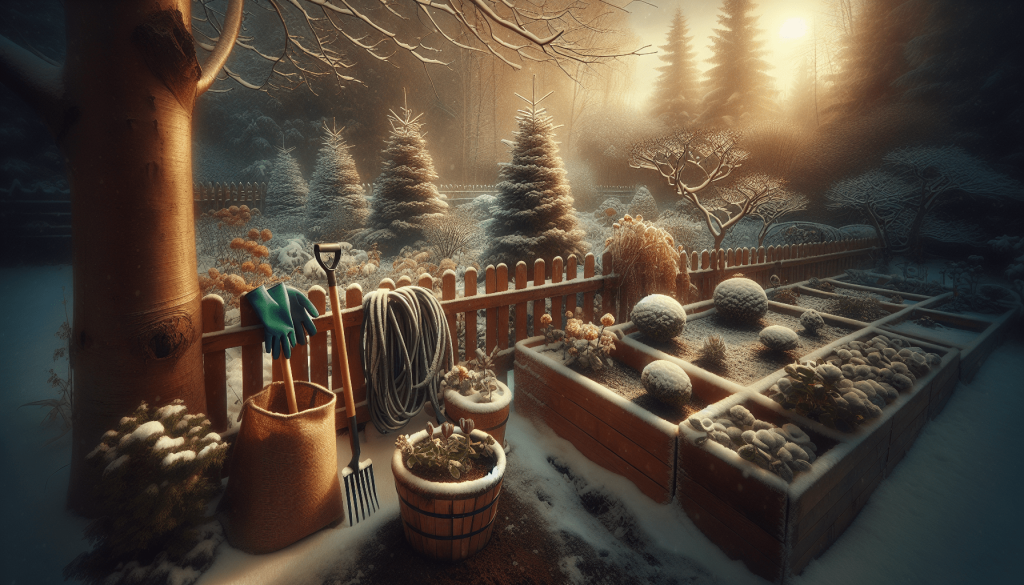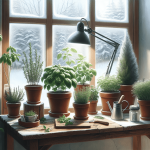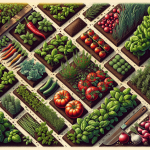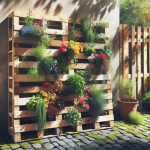This post may contain affiliate links. As an Amazon Associate, we may earn commissions from qualifying purchases.
As winter approaches, preparing your garden for the cold months ahead can ensure that it thrives when spring arrives. In “What Are The Best Practices For Winterizing A Garden?” you’ll discover practical and effective tips to protect your plants and soil from harsh weather. From insulating your garden beds to protecting perennials, these best practices will help you maintain a healthy and beautiful garden all year round. Embrace these strategies, and you’ll be well on your way to preserving the fruits of your labor through the frostiest of seasons. Have you ever found yourself staring at your wilting garden in the colder months, wondering what in the world you should be doing to keep it alive and vibrant? Welcome to the conundrum known as winterizing your garden. It’s a bit like putting your plants to bed for a long nap, except instead of pajamas, they’re wrapped in mulch and fabric.

Understanding Garden Winterization
Winterizing a garden isn’t just about throwing a tarp over your prize-winning petunias and calling it a day. Oh no, my friend. It’s the artful practice of preparing your greenery for the onslaught of cold weather. Think of it as the gardening world’s answer to hibernation. It’s a process that protects your plants from frost, snow, and the kind of icy winds that make you question your life choices every year. Let’s break it down.
Why Is Garden Winterization Important?
Winterizing your garden is essential for several reasons. First, it helps protect your plants from the harsh, unforgiving elements of winter. You know the drill: frost, freezing temperatures, and insidious ice. Left unchecked, these can damage or outright kill your horticultural darlings. And let’s be honest, nobody wants to see their beloved marigolds turned into frozen plant-popsicles come January.
The Ideal Timeline for Winterization
You might be wondering when to start this formidable task. Timing is crucial. Start too early, and your plants might not receive the natural cues to start going dormant. Start too late, and Jack Frost might have already claimed his first victims. Generally, late fall—about six weeks before the first expected frost—is the magic window.
Here’s a handy timeline:
| Month | Action Required |
|---|---|
| September | Assess your garden, plan your strategy |
| October | Begin cleaning, trimming, and harvesting |
| November | Protect plants, apply mulch, final touches |
Getting Your Tools Ready
Before you dive into the nitty-gritty of garden winterization, you need to get your tools in order. Just like any proper operation, a well-stocked toolkit can be your best friend.
Essential Tools for Winterization
- Pruning Shears: For trimming dead branches and overgrown plants.
- Mulch: To insulate and protect your plant roots.
- Garden Fabric or Burlap: For wrapping delicate plants.
- Compost: To nourish the soil.
- Watering Can or Garden Hose: For those last-minute watering needs.
- Rake: To gather fallen leaves and debris.
- Gloves: Protect your hands from the cold and thorny encounters.
Cleaning Up Your Garden
Let’s start with the basics. Much like tidying up your room before guests arrive, you need to clean up your garden. This step helps prevent diseases from spreading and keeps pests at bay. Plus, it gives you a clean slate for whatever lunacy, I mean, “creative planting plans” you have for spring.
Removing Dead and Dying Plants
Dead or dying plants are like that one sock that’s been hiding under your couch for six months. It’s time to be rid of them. These plants can harbor pests and diseases that can survive the winter and wreak havoc in the spring.
Composting Plant Debris
Don’t just throw those dead plants in the bin; consider composting them. It’s the circle of life, Simba. Composting returns valuable nutrients back to your garden soil, giving you a richer, more fertile ground next planting season.
Weeding
Ah, weeds. The arch-nemesis of your garden. Weeding is crucial because, believe it or not, some weeds can survive the winter and come back stronger in the spring. It’s best to pull them up by the roots now.
Pruning and Trimming
Once your garden is clean, the next step is pruning and trimming. This helps promote healthy growth by getting rid of the old, making way for the new.
What to Prune
Before you go all Edward Scissorhands on your garden, you need to know what and when to prune. Focus on removing dead, diseased, or damaged branches first. Then, trim back perennials to about an inch or two above the ground.
The Do’s and Don’ts of Pruning
| Action | Do | Don’t |
|---|---|---|
| Timing | Prune late fall, after the first frost | Prune too early, which stimulates growth |
| Tools | Use sharp, clean tools | Use dull tools, which can damage plants |
| Technique | Cut at a 45-degree angle | Pull or tear branches |

Protecting Plants from the Cold
Now comes the fun part—making sure your plants are snug as a bug in a rug. It’s all about insulation and protection from frost and icy winds.
Mulching
Mulch is the unsung hero of garden winterization. It helps maintain soil moisture, suppress weeds, and insulate plant roots from temperature extremes.
Types of Mulch
- Organic Mulch: Bark, straw, pine needles, or leaves. These break down over time, enriching the soil.
- Inorganic Mulch: Gravel or plastic. These don’t break down but are good for long-term use.
How to Apply Mulch
Spread a layer of mulch about 2-4 inches thick around the base of your plants but be careful not to pile it up against the plant stems. Think of it as tucking them in for bed—snug, but not suffocating.
Burlap and Garden Fabric
For more delicate plants, burlap or garden fabric can offer protection against biting winds and frost. Just wrap the fabric around the plant and secure it with garden twine. Pro-tip: Avoid using plastic; it can trap moisture and lead to rot.
Winterizing Specific Plant Types
Different plants require different winterization techniques. Let’s break it down by some of the most commonly winterized plants in the garden.
Winterizing Perennials
Perennials are the marathon runners of the plant world. They need proper care to survive winter and come back strong in the spring.
- Cut Back: Trim back to 1-2 inches above the ground.
- Mulch: Apply a 2-4 inch layer.
- Water: Give them a good, deep drink before the ground freezes.
Winterizing Annuals
Annuals are those flamboyant party-goers who live fast and die young, not making it past a year. Still, there are steps you can take to give them their best shot.
- Remove and Compost: Uproot the dead annuals and compost them.
- Seed Saving: Collect seeds for planting next year.
- Bed Prep: Clean the bed, add compost, and maybe cover it with mulch to prepare for next year’s show.
Winterizing Trees and Shrubs
Trees and shrubs are the sturdy backbones of your garden, but they need some TLC too.
- Prune Wisely: Focus on removing dead or diseased branches.
- Mulch: A generous layer of mulch at the base helps.
- Wrap: Use burlap for young or sensitive trees to protect from wind damage and frost cracks.
Preparing Your Soil
Your soil is the unsung hero of your garden. It’s like the foundation of a house—you can’t build anything spectacular without it.
Soil Testing
Before you start, consider getting a soil test. This will inform you about the pH level and nutrient deficiencies. You’d be surprised how enlightening a soil test can be. It’s like a “know thyself” moment for your garden.
Adding Compost and Fertilizer
Add compost to enrich your soil. A top dressing of organic compost will work wonders. You can also add slow-release fertilizer, but don’t overdo it; you don’t want to encourage growth just as your plants are settling in for their long winter’s nap.
Watering: Not To Be Overlooked
Believe it or not, watering is still important even as temperatures drop. Your plants need a good soak before the ground freezes to stay hydrated through the winter.
Best Practices for Winter Watering
- Deep Watering: Water deeply in late autumn to ensure roots are well-hydrated.
- Frozen Ground: Avoid watering if the ground is already frozen; it’s like trying to drink a milkshake through a straw—impossible.
- Check Soil Moisture: Stick your finger into the soil; if it’s dry an inch down, it’s time to water.
Winterizing Garden Tools and Equipment
Your tools have served you well throughout the year, and they deserve a bit of TLC before being put away.
Cleaning Your Tools
A little soap and water go a long way. Scrub off any dirt and let them dry completely to prevent rust.
Sharpening and Oil
Sharpen pruners, shears, and other tools, then apply a light coat of oil to metal parts. Think of it as giving them a spa day.
Storage Solutions
Store your tools in a dry place. Consider hanging them up or placing them in a tool shed. Rust is your enemy here, my friend.
Maintaining Garden Ecosystem
While you’re focused on the plants, don’t forget about the creatures that call your garden home. Birds, insects, and other wildlife play crucial roles in maintaining a healthy ecosystem.
Bird Feeders and Houses
Set up bird feeders to help our feathered friends during the lean winter months. A birdhouse provides shelter, and bird feed offers essential nutrients.
Insect Hotels
Yes, you read that right. Insect hotels provide sanctuary for beneficial insects like ladybugs and lacewings, which are natural pest controllers.
Planning for the Next Season
When the cold months make it impossible to enjoy your garden’s full glory, use this time to plan for the next year’s botanical bonanza.
Keeping a Garden Journal
Document what worked and what didn’t this year. Note it all down in a garden journal—it’s not just for old ladies in floral print dresses. This will help you make more informed decisions when the next planting season rolls around.
Seed Catalog Shopping
Winter is the perfect time to peruse seed catalogs. With a warm cup of cocoa in hand, dream about the new varieties you’ll introduce next year. Trust me, it’s the gardening equivalent of vacation planning.
Final Thoughts
Winterizing your garden might seem like a daunting task, but think of it as an investment in the future health and vitality of your plants. You’ve spent the warm months nurturing your gardening space, and a bit of effort now will ensure that it greets you with open leaves and vibrant blooms once the winter thaws. So grab your tools, your mulch, and maybe a pair of snazzy gloves, and give your garden the wintertime TLC it truly deserves.
Happy winterizing, and see you in the spring!








